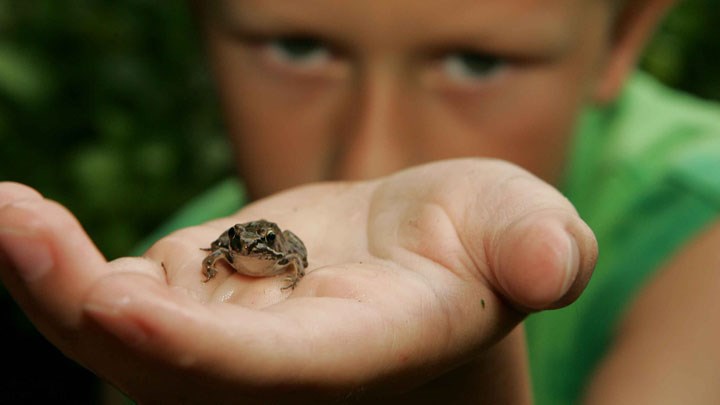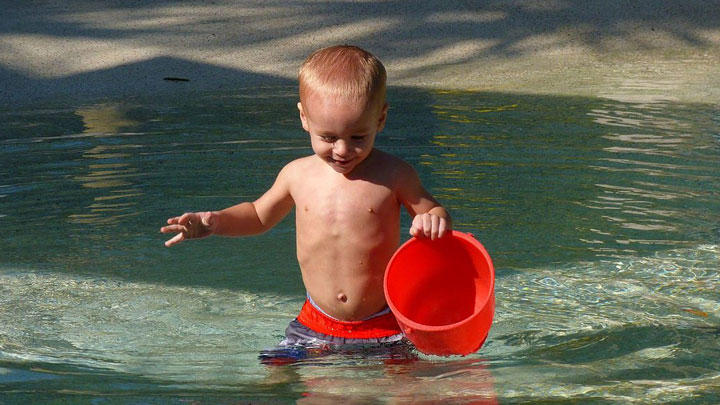
by Chris Chaffin - Monday, June 7, 2021

In our collective “R3” efforts to recruit, retain and reactivate hunters, we should never overlook the small things that can have a big effect on those who are—or could be—active and enthusiastic outdoors men and women.
For the lucky (some would say blessed), their journey into being a hunter started with being born into a hunting family or with a natural mentor like an uncle or close friend of the family. For the rest of us, our interest likely was piqued by one or more experiences—an activity, a place, a thing or maybe a person who made an impression. Something or someone grabbed our attention, initiated a small rumble somewhere inside us or opened our eyes to new ideas and opportunities.

The fact that these experiences might well, in fact, have been small, seemingly insignificant events should not be overlooked in our plans to recruit or activate the next generation of hunters.
My first connection with nature came as a toddler, chasing frogs in a tiny drainage ditch that was maybe 6 or 8 inches wide. It was on the side of our rural rental home property in Utah. So many things fascinated me about them: They lived in the water (or so said my young mind), their skin was green and shiny, they looked kind of funny and they could jump like they were flying.
We moved to sunny Florida shortly after my frog period and I was introduced to toads, easier to catch and examine but still fascinating. Of course, the toads came with lots of birds and bugs, some totally intriguing garter snakes and some ornery wasps in our neighborhood. I learned about these critters from the kids who lived around me. No one in my immediate family had any interest in hunting, and only miniscule participation in fishing. But I was blessed to live where there was undeveloped land close by and a culture and lifestyle that allowed me to explore.
I had a childhood of little exposures, discoveries and revelations. As my interests in wildlife grew, I used paper-route money to buy a subscription to Field & Stream at age 8. Those articles lead me to an increasing interest in wildlife and, of course, the guns hunters used. Knowing I’d never get anywhere with my gun dream and my single parent mother, I asked Gramp one day if he knew anyone who would help me pursue the idea. He said, “You have an Uncle Sam who will give you one … in a few years.” And he laughed, breaking out into a huge smile. I didn’t know I had an Uncle Sam.
I did buy a trusty Daisy Red Ryder BB gun with my paper-route money and managed a little neighborhood plinking. But the next little thing that happened was my third-grade teacher, Mrs. Clark. She took the time to take me out plinking tin cans with her son. It added huge encouragement and support to my growing interest. Imagine, my teacher, one of the most influential adults in my life, taking me out shooting.
Along about that same time, an impromptu day job helping a man deliver dry cleaning in our neighborhood lead to a lunch break where he asked if my buddy and I liked to shoot. “YES!” we said, emphasis on all caps. He proceeded to pull an old 12-gauge pump out of his trunk and let us each shoot it into the creek at the far border of our housing area. No, I didn’t fall down, but I did stagger back a step or two … and loved watching the pellets spray into the creek. I was hooked.
Mom finally came around, seeing my passion for the outdoors and hunting, and arranged for one of her senior high school students to take me on a real dove hunt. I was the bird boy but watching the birds zip and dip, darting around trees and hunters, was an amazing experience, as was actually holding the birds in my hand, feeling and seeing them up close. It was a small thing to set up a tag-along hunt, but, wow, what an impact.
A second marriage for Mom brought a retired Marine into my life. Not a hunter or a shooter but he supported my interest and bought me my first “serious” rifle, a break-barrel .177 pellet gun. That lead to a bolt-action, single-shot .22 for Christmas the following year, along with lessons on cleaning and caring for the rifle. The die was cast.
There were, of course, other small events, but it’s clear that building an interest in the outdoors, wildlife and hunting doesn’t have to mean annual trips to deer camp or an African safari. Look for and take advantage of nearby places to expose others to wildlife, to the web of life, to habitat and places they can explore, making their own discoveries. Make plans to take them to areas where you are confident that they will see, and maybe handle, some appropriate wildlife. Wildlife management areas, neighborhood parks, ponds, camping spots and even zoos can contribute.
While the devil may be in the details, it’s also where the small things can make a world of difference.
About the Author
An outdoor communicator for more than 40 years, Chris Chaffin has worked with multiple outdoor companies, including serving two terms as treasurer of the Professional Outdoor Media Association before taking on the roles of vice president, president and chairman of the board. In 2007, he launched the communications consulting company Chaffin Communications Inc. With support from the Outdoor Adventure Dream Giveaway, in 2012 he founded the Outdoor Adventure Conservation Fund, a Florida non-profit encouraging more people to get involved in traditional outdoor activities.
E-mail your comments/questions about this site to:
[email protected]
Proudly supported by The NRA Foundation and Friends of NRA fundraising.
